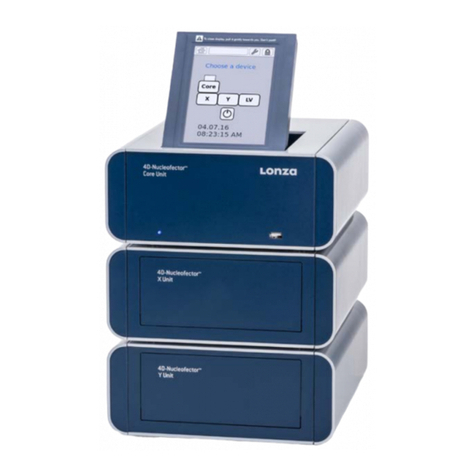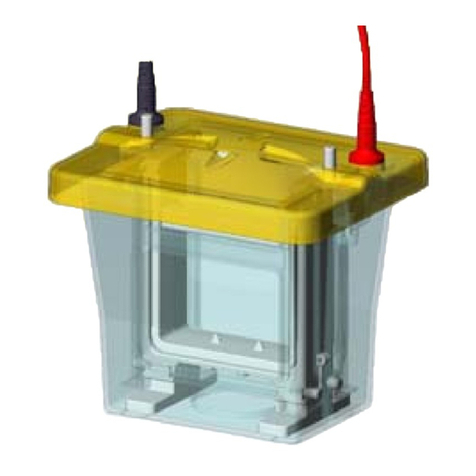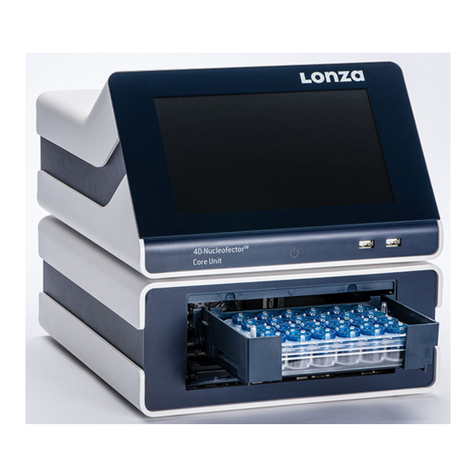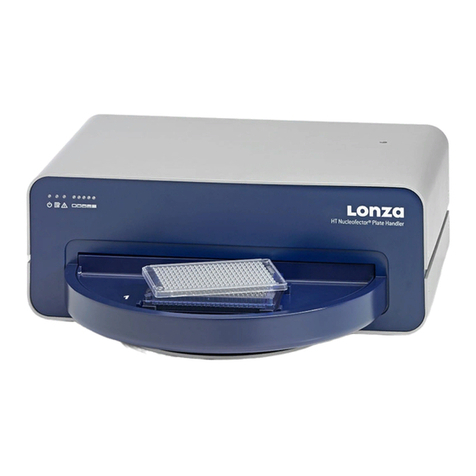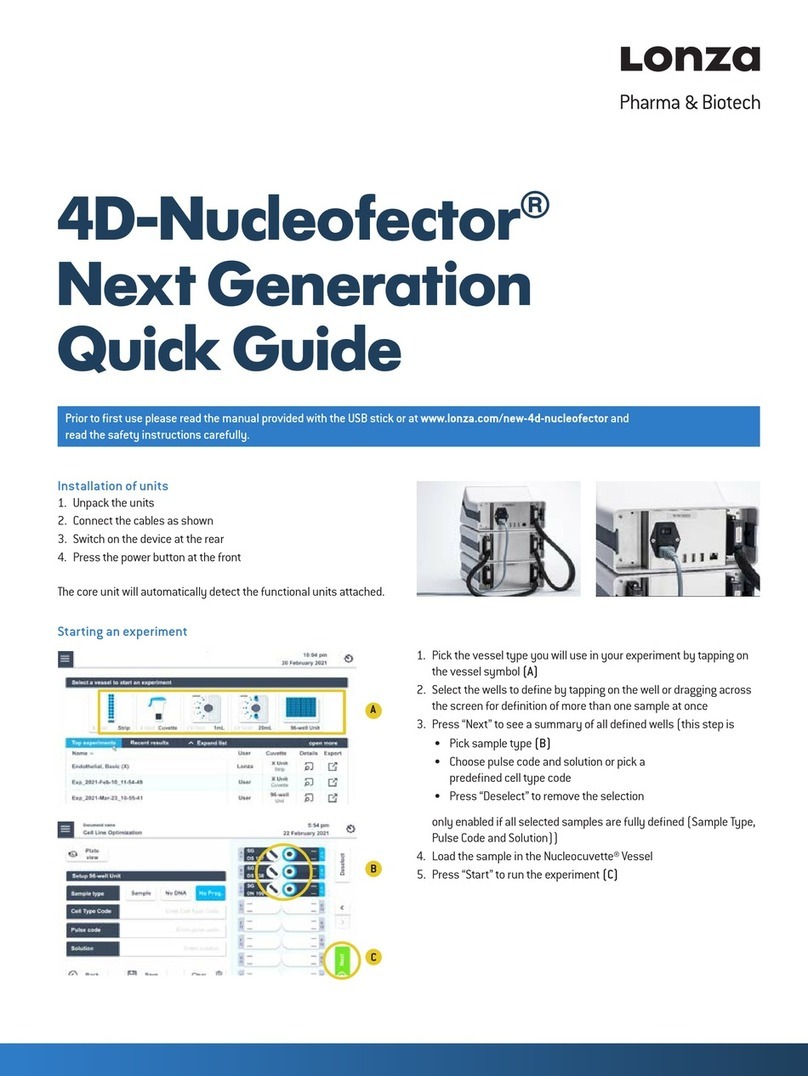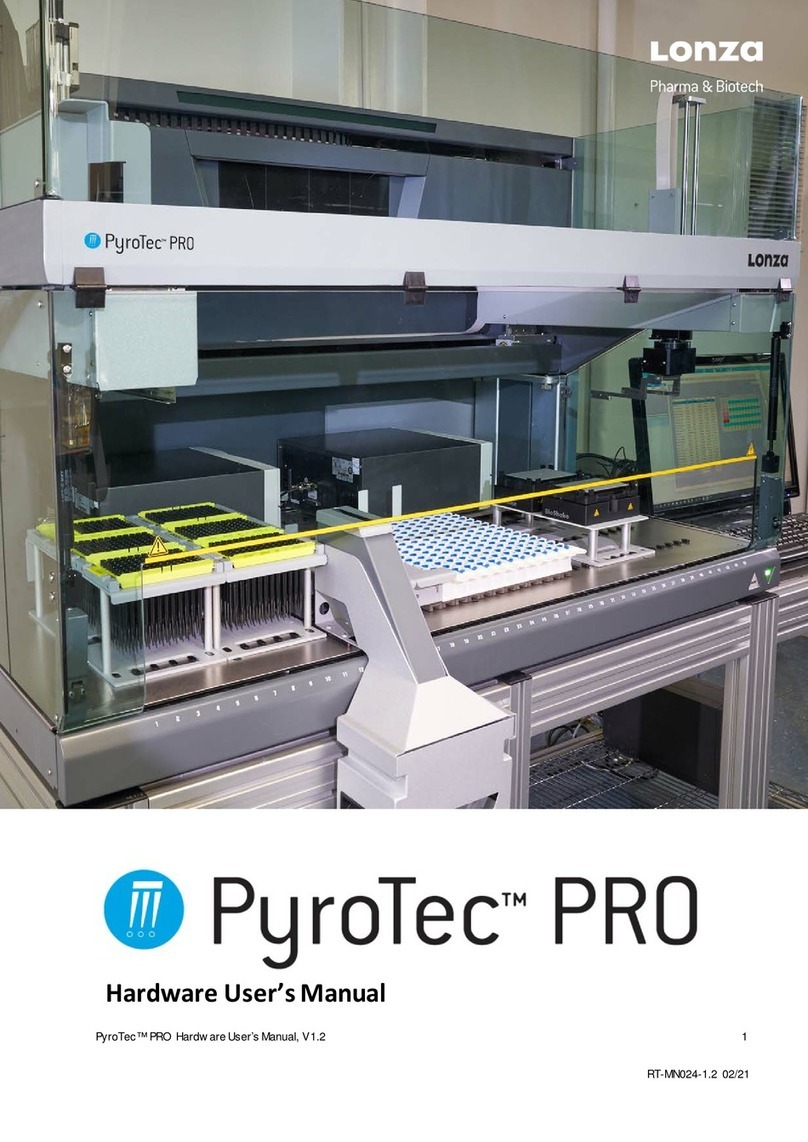
6
2.3 Safety Instructions–
Please Read Carefully
This symbol means that there is a risk of electric shock. An electric
shock could cause death or personal injury.
The Nucleofector™ II Device has been certied by international
safety standards and is safe to use when operated in accordance
with this manual.
This device is designed to deliver variable high voltage electrical
impulses for the purpose of introducing nucleic acids into
eukaryotic and prokaryotic cells.
These electrical impulses can be DEADLY.
Therefore, use this device with care and take the following
precautions:
— Only use the device once you have read and understood the
Nucleofector™ II Manual. The manual should be accessible
for all users. Make sure that each potential user reads and
understands it.
— Do not open the device. The device does not contain user-
serviceable parts. Under no circumstances should circuit
components be interfered with, as they can deliver an electric
shock even when system is not in operation.
— Do not alter the device in any manner.
— Do not obstruct the movement of the carousel of the
Nucleofector™ Device.
— Do not plug any non-Lonza-certified connectors into the
external electrodesockets attherearside oftheNucleofector™
Device. The sockets are high-voltage outputs that can deliver
electric shocks via any non-Lonza device that is connected to
the Nucleofector™ Device. They are designed to connect Lonza
certified add-on devices to the Nucleofector™ II Device, e.g.,
the 96-well Shuttle™ Device.
— Only use the device when it is set on top of a safe, plain and
stable table or bench.
— Place the device such that easy removal of the power cord is
possible at any time.
— Do not expose the device to a humid environment.
— The device shall not be exposed to direct sunlight nor be
placed in a hot environment.
— The device is not approved for use in fire or explosion
endangered areas, nor for use with inflammable or explosive
media.
— Employ precautions against great impact and vibration in
moving and transporting the Nucleofector™ II Device.
— Use the device with Lonza’s certified Nucleofector™ Solutions
and Lonza certified cuvettes only. Use of any other solution
or cuvettes from any other source than Lonza will preclude all
warranty and liability claims.
— Standard Nucleofector™ Solutions and 96-well Nucleofector™
Solutions (used for the Nucleofector™ 96-well Shuttle™
System) are not compatible. Please do not use the
Nucleofector™ II Device with the 96-well Nucleofector™
Solutions.
— Unpack the cuvettes just prior to the experiment. Make sure
that the outer contact areas are dry.
— If any fluid has been spilled in the close vicinity of the
Nucleofector™ II Device, safety may be compromised. Ensure
that no fluid has been in contact with or entered the device.
— If any fluid has been spilled at the device, the safety may be
compromised. To confirm that the use of the device is safe,
contact Lonza Scientific Support for actions or precautions.
— Never place any foreign object on the device to avoid the risk
of equipment damage.
— Do not enter or place foreign objects in the carousel area of
the Nucleofector™ II Device.
— If any foreign object has entered the Nucleofector™ II Device,
safety may be compromised. To confirm that the use of the
device is safe, contact Lonza Scientific Support for actions or
precautions.
— If the Nucleofector™ II Device has been damaged, ensure that
the device can not be used by any personnel and contact
Lonza Scientific Support for assistance.
— All service shall be performed by Lonza authorized personnel
only.
— Handling of device parts that has the possible risk of sample
contamination shall always be performed with protective
gloves and any disposal of such parts must be according to
Federal, state or local procedures for clinical waste handling
and disposal. Use secure leak proof containers and avoid
unprotected handling of such parts.
Lonza Cologne GmbH disclaims all warranties and shall in no
event be liable for any kind of damages caused by or arising out of
any operation or use in violation of the above safety and handling
instructions.






